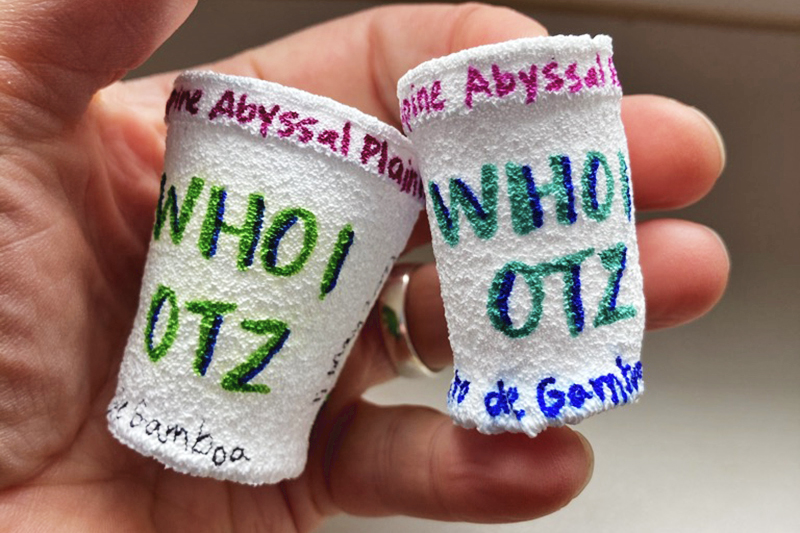Posts by elisehugus
Mail Buoy: May 25
Home Expedition 17 Mail Buoy May 25 Question: What is something you like to do in your past time? Like in between dives and stuff, what do you guys do? Answer: We do a lot of the things you might expect, such as playing cards, reading, writing, and watching movies. Lots of us decorated…
Read MoreMail Buoy: May 21
Home Expedition 17 Mail Buoy May 21 Mail Buoy: May 21 Question: Did you find any new species? -Monjola Answer: Maybe, but we won’t know for a while. Finding new species can be a longer process than you might think. Official discoveries include describing the specimen, cataloging its DNA, and going through an extensive scientific…
Read MoreBy the numbers
Home Expedition 17 Daily Updates Day 15: By the numbers By the numbers By Marley Parker & Michelle Cusolito After three action-packed weeks aboard the Sarmiento de Gamboa, everyone on board is reflecting on the experience and totaling up all that we accomplished. A view of sunset from the bow of the Sarmiento de Gamboa…
Read MoreMail Buoy: May 20
Home Expedition 17 Mail Buoy May 20 Mail Buoy: May 20 Question: What is the most interesting thing you have found so far? -Grace, Clarke Middle School Answer: We’re finding all sorts of cool creatures on this trip. WHOI biologist Joel Llopiz has found a strawberry squid, heteropods and a giant amphipod (among other neat…
Read MoreThe great migration
Home Expedition 17 Daily Updates Day 14: The great migration Day 14: The great migration By Michelle Cusolito When we hear the word “migration” we often picture charismatic animals covering vast distances—like wildebeests crossing the Serengeti, or Canada geese flying south for the winter. But did you know that the largest migration on earth happens…
Read MoreMail Buoy: May 19
Home Expedition 17 Mail Buoy May 19 Mail Buoy: May 19 Hi, we are students in Ms. Sheild’s class at Clarke Middle School in Lexington, Mass. We had some questions about the stormy conditions you had recently. Question: What was the (maximum) height of the waves during the storm? -Vasilis Answer: It’s hard…
Read MoreCapturing carbon
Home Expedition 17 Daily Updates Day 13: Capturing carbon Day 13: Capturing carbon By Marley Parker In school, we learn about the carbon cycle–typically within the context of forests. Through photosynthesis, trees absorb carbon dioxide and produce oxygen, and when their leaves fall to the ground, they decompose and absorb into soil. Some of the…
Read MoreMail Buoy: May 18
Home Expedition 17 Mail Buoy May 18 Mail Buoy: May 18 Question: I was wondering if any instruments that you send out into the ocean have been eaten by other sea creatures. Do the instruments have certain attributes that discourage animals from eating them? -Sophia C., Clarke Middle School Answer: Those are really good…
Read MoreSmall but mighty MINIONs
Home Expedition 17 Daily Updates Day 12: Small but mighty MINIONs Day 12: Small but mighty MINIONs By Marley Parker On a bright, breezy morning, six of us stand on the aft deck holding Pyrex tubes full of 3D-printed materials, wires, and circuit boards. As the wind whips our faces, Jackson Sugar works with Bosun…
Read MoreMail Buoy: May 17
Home Expedition 17 Mail Buoy May 17 Mail Buoy: May 17 A sample from the Twilight Zone includes an Atolla jelly (far right) and other invertberates. Photo by Marley Parker, @Woods Hole Oceanographic Institution Question: Hi, we are students in Ms. Sheild’s class, and we saw the red jellyfish on the Day 8 post. We…
Read More







